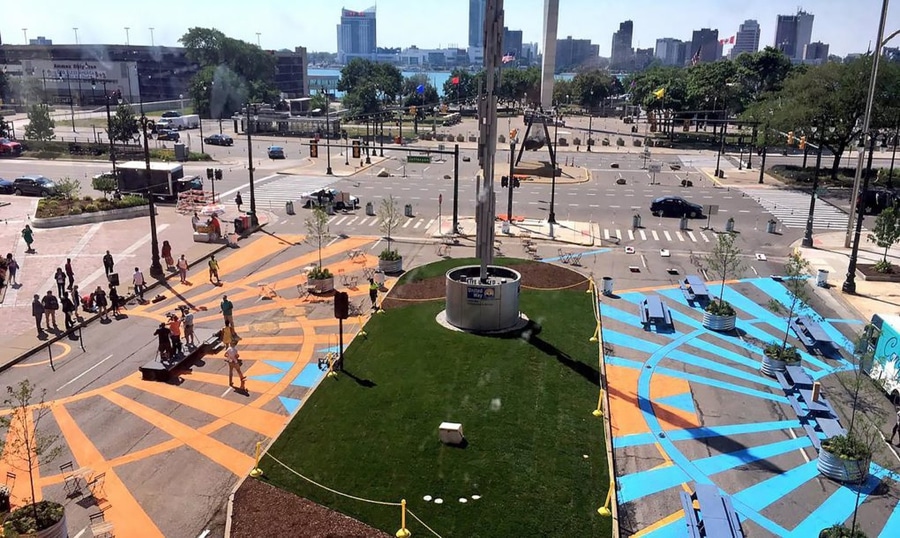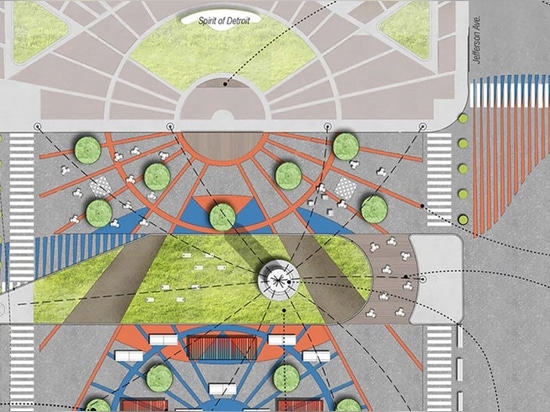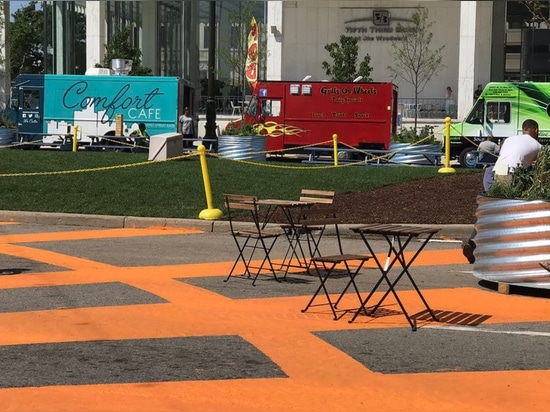
#LANDSCAPING AND URBAN PLANNING PROJECTS
Detroit debuts brand new 20,000-square-foot pedestrian plaza
Detroit, Michigan is one of the most dangerous cities in the United States for pedestrians. But the city is taking one step to overcome that with the recent opening of a new plaza by the iconic Spirit of Detroit statue. The 20,000 square foot civic square offers space for live performances and art displays, and will host food trucks.
The Spirit of Detroit Plaza takes over one block of Woodward Avenue between Jefferson Avenue and Larned Street in front of the statue, which has adorned the area since 1958. The space boasts tables and chairs, colorful paintings on the sidewalk, lights, and planters. It will go through a 90-day trial this summer to see how pedestrians and traffic respond to the newly-created area.
Mayor Mike Duggan said in a statement, “Every world-class city has a central plaza where people can gather and celebrate its civic history, and in front of the Spirit of Detroit is the perfect place for all Detroiters to have the opportunity. We are committed to a Detroit that’s open and accessible to all and this new plaza has been envisioned to celebrate all of the diversities that come together to make us a great city.”
Detroit said the new plaza offers “a more direct pedestrian link between Downtown and the Detroit Waterfront.” Vehicles will be redirected onto other nearby streets. The city also said the plaza’s presence could help slash the potential for crashes. The plaza helps simplify an intersection and that fact along with adjusted area traffic signals could even reduce delays on Jefferson Avenue.
If the trial goes well, city agencies and the mayor aim to make the plaza permanent. City Planning Director Maurice Cox described the Spirit of Detroit Plaza as a “key piece in making a more vibrant, walkable, diverse downtown.” He appears to have high hopes for the plaza, saying in a statement, “By simplifying the downtown grid and consolidating traffic flow, we are creating a more inviting street and safer pedestrian crossings. And of course, if something changes or the design doesn’t work as well as we expect, we can adjust it or even restore its original design. We expect this will reset expectations for what is possible on neighborhood streets across the city.”


